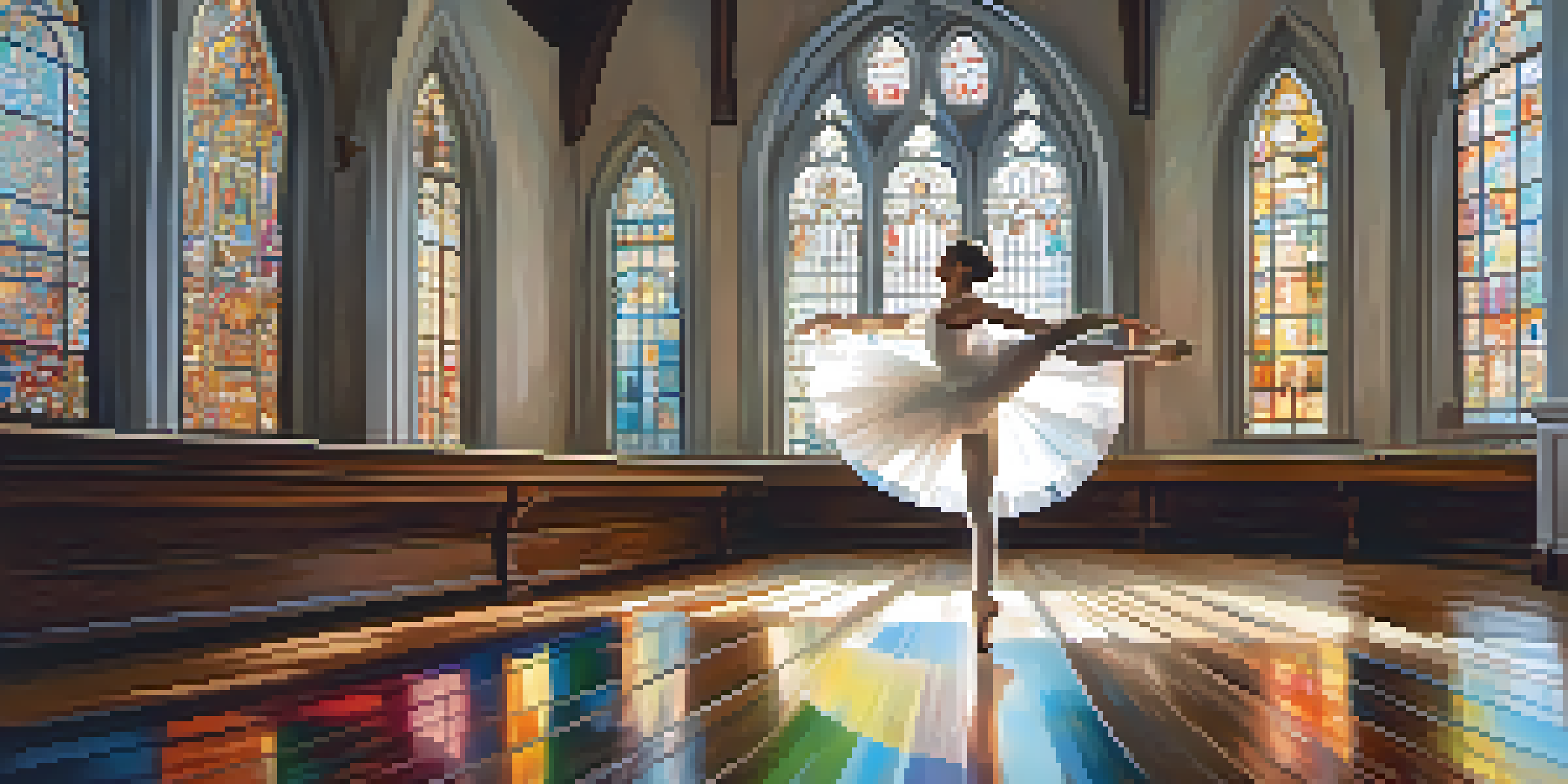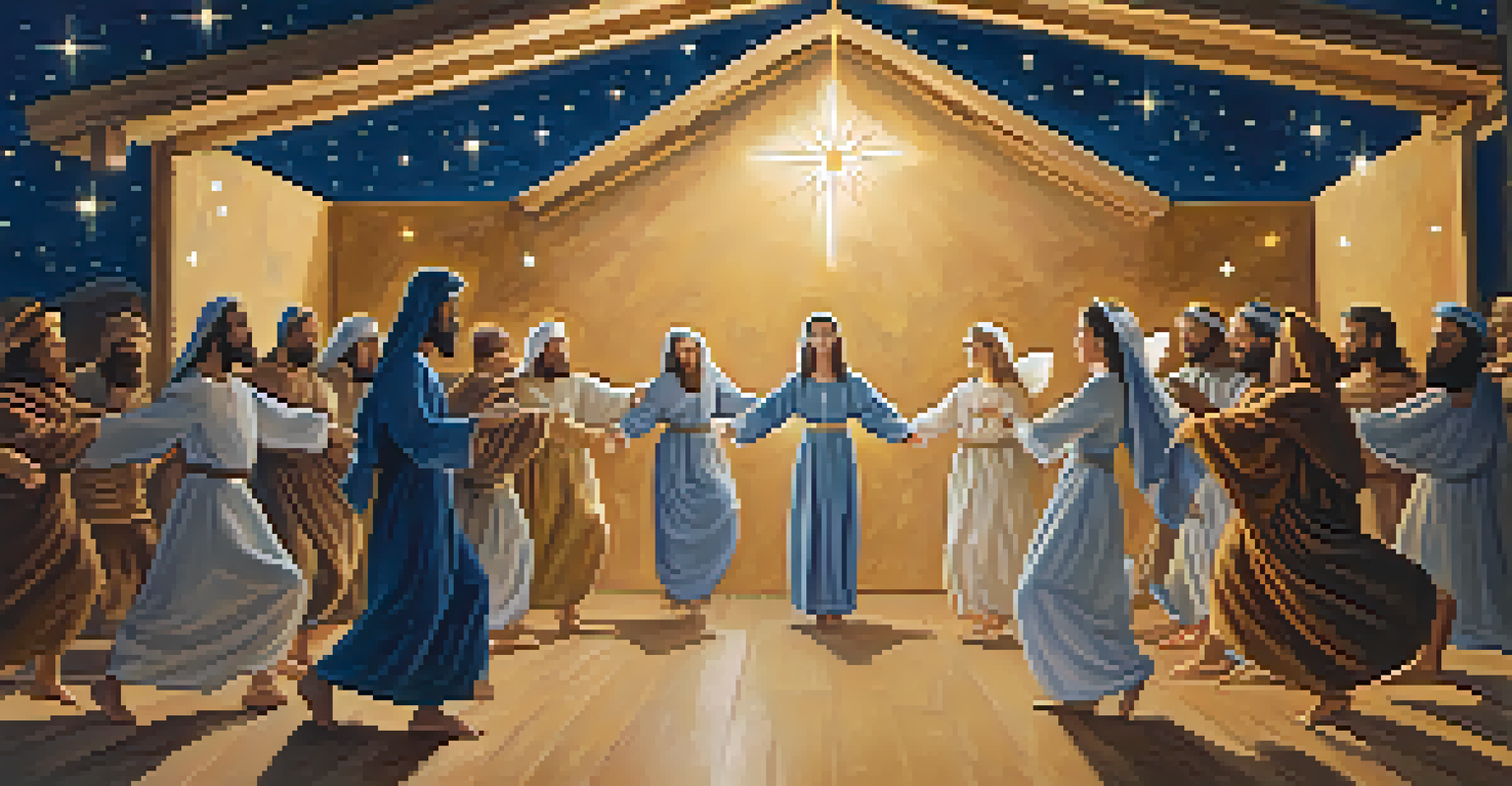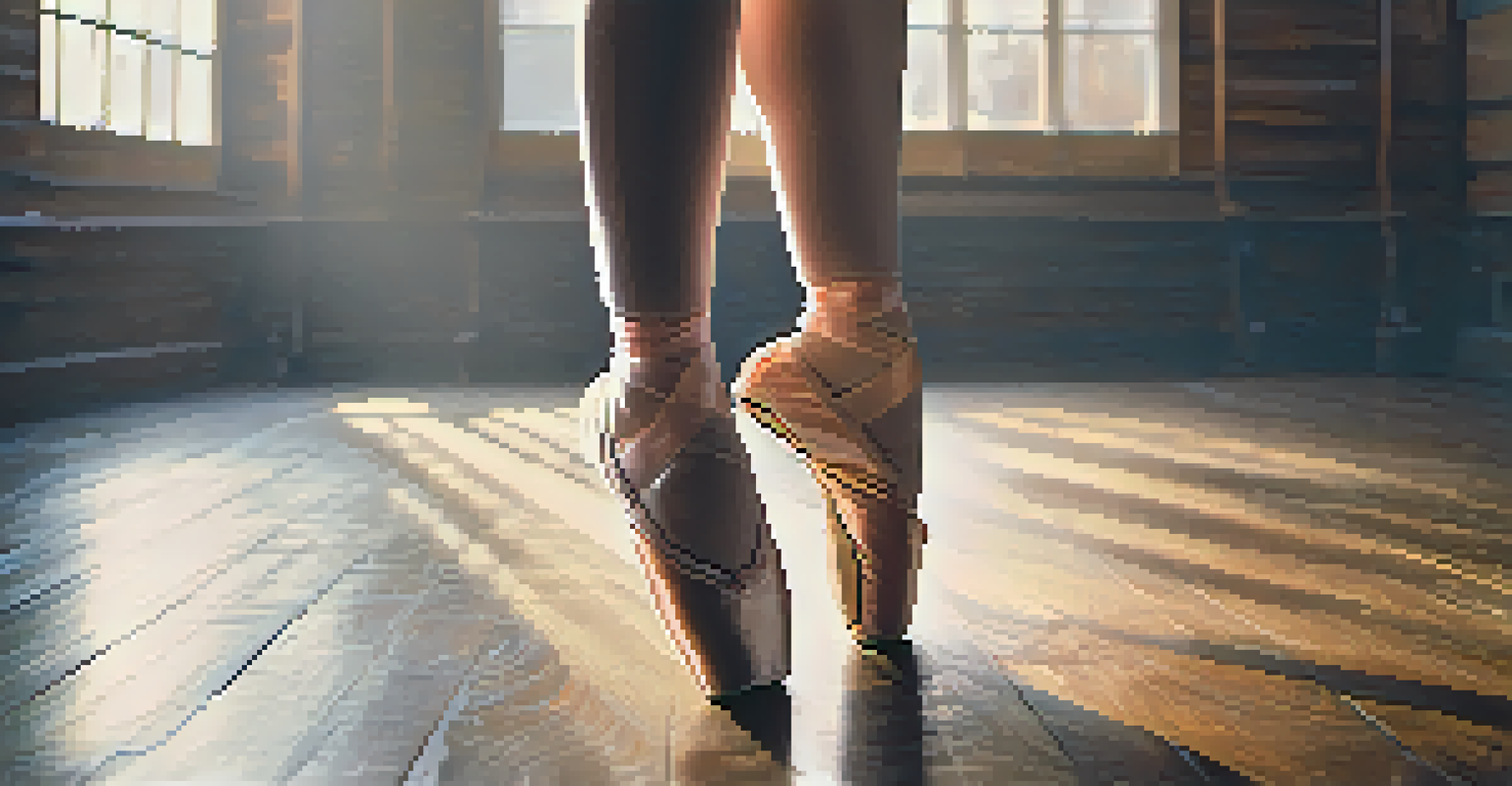Ballet and Faith: Dance in Christian Worship and Rituals

The Intersection of Ballet and Christian Faith
Ballet, with its grace and precision, often finds itself intertwined with Christian faith. This artistic form of dance offers a unique way to express devotion and spirituality. By embodying biblical narratives and themes, ballet allows worshippers to connect more deeply with their faith through movement.
Dance is the hidden language of the soul.
For instance, dancers may interpret the story of creation or the life of Jesus through beautifully choreographed performances. This not only makes the stories more relatable but also invites the audience to engage on a different level. As the dancers move, they create a visual representation of faith that resonates with both the body and the spirit.
In many churches, ballet serves as a bridge between tradition and contemporary worship, illustrating how art can enhance religious expression. By embracing this form of dance, communities can foster a richer spiritual atmosphere and encourage deeper connections among their members.
Ballet as a Form of Worship
In many Christian worship settings, ballet is not just performance but a form of worship itself. Dancers often dedicate their movements to God, using their bodies as instruments of praise. This dedication transforms the dance into an act of reverence, inviting the congregation to reflect on their own faith journeys.

During services, choreographed pieces may coincide with hymns or scripture readings, enhancing the overall worship experience. The elegance of ballet can evoke powerful emotions, allowing congregants to feel a sense of awe and connection to the divine. This integration of dance and worship can create a memorable experience that lingers long after the performance.
Ballet Enhances Spiritual Connection
Ballet serves as a powerful medium for expressing faith, allowing worshippers to engage deeply with biblical narratives through movement.
Moreover, incorporating ballet into worship can attract individuals who may not resonate with traditional forms of worship. It opens a dialogue about faith through the universal language of movement, inviting everyone to explore spirituality in a new light.
Ballet in Rituals and Celebrations
Ballet often plays a significant role in Christian rituals and celebrations, such as Christmas and Easter. These occasions provide an opportunity for dancers to tell the story of Jesus’s birth, resurrection, and the overarching themes of hope and redemption through movement. The choreography can capture the essence of these narratives, making them accessible to all ages.
The dance is a poem of which each movement is a word.
For example, a Christmas ballet might depict the journey of Mary and Joseph, creating a visual narrative that deepens the understanding of the season. Similarly, Easter performances can express the joy of resurrection, allowing the congregation to celebrate through the art of dance. Each movement embodies the emotions tied to these significant events, enhancing the spiritual atmosphere.
Incorporating ballet into these rituals not only enriches the experience but also encourages participation from various members of the community. It fosters a sense of unity as everyone comes together to witness and celebrate their faith through art.
The Therapeutic Aspects of Dance in Worship
Engaging in ballet as part of worship can also provide therapeutic benefits. Dance has long been recognized for its ability to promote mental and emotional well-being, and when combined with faith, it can be a transformative experience. For many, expressing their spirituality through movement helps alleviate stress and fosters a sense of peace.
This therapeutic aspect of dance is particularly beneficial in communal settings, where individuals can connect with one another. As they move together, dancers experience a sense of belonging that reinforces their faith community. The shared experience of ballet can create bonds that go beyond the physical, nurturing spiritual growth and healing.
Dance as Worship and Community Bond
Incorporating ballet into worship transforms dance into an act of reverence, fostering a sense of belonging and connection within the faith community.
Additionally, participating in ballet can serve as a form of prayer for some worshippers. The act of dancing can become a meditative practice, allowing individuals to channel their thoughts and emotions into movement, thus deepening their connection with God.
Training and Preparation for Ballet in Worship
Preparing for ballet performances in the context of Christian worship requires careful training and dedication. Dancers often learn not only the technical aspects of ballet but also the importance of the spiritual messages they convey. This dual focus ensures that the performances are both artistically compelling and spiritually meaningful.
Dancers typically participate in rehearsals that emphasize both choreography and the integration of faith-based themes. It's essential for them to understand the stories they are telling through their movements, allowing them to embody the spirit of worship authentically. This preparation fosters a sense of purpose, as each dancer recognizes their role in enhancing the worship experience.
Moreover, this training often extends to the church community as a whole. Workshops and classes may be offered to educate congregants about the significance of ballet in worship, inviting more people to participate and experience the profound impact of dance in their spiritual lives.
Challenges and Misconceptions about Ballet in Worship
Despite its beauty, integrating ballet into Christian worship does come with challenges and misconceptions. Some might view ballet as too secular or not fitting within the context of worship, leading to resistance from certain community members. It's crucial to address these concerns with open dialogue, emphasizing the spiritual benefits that ballet can bring.
Additionally, there may be misconceptions about the nature of dance itself. Some individuals might believe that dance detracts from the solemnity of worship, viewing it as entertainment rather than a form of praise. It’s important to highlight how dance can enhance worship by deepening emotional and spiritual connections, rather than overshadowing them.
Future of Ballet in Worship is Bright
The ongoing evolution of ballet in Christian worship promises innovative and collaborative expressions of faith that resonate with diverse congregations.
Navigating these challenges requires sensitivity and understanding, as well as a commitment to fostering an inclusive atmosphere. By educating congregations about the value of ballet in expressing faith, communities can embrace this art form as a vital part of their worship experience.
The Future of Ballet in Christian Worship
Looking ahead, ballet's presence in Christian worship is likely to evolve as communities continue to explore creative expressions of faith. As more churches recognize the power of movement, we may see an increase in collaborative efforts between dancers and worship leaders. This collaboration can foster innovative approaches to worship that resonate with diverse audiences.
The fusion of ballet with other forms of artistic expression, like music and visual arts, can lead to richer worship experiences. By creating multi-sensory environments, congregations can engage worshippers on various levels, inviting them to participate fully in the spiritual journey.

Ultimately, the future of ballet in Christian worship hinges on openness and creativity. As communities embrace the transformative potential of dance, we can expect to see a vibrant tapestry of faith expression that honors tradition while inviting innovation.